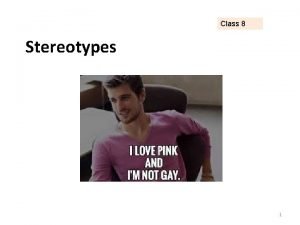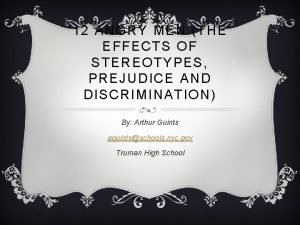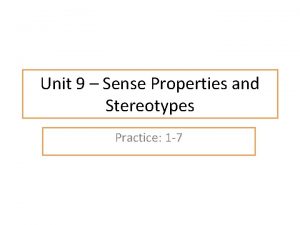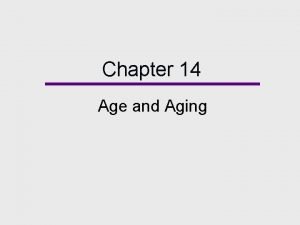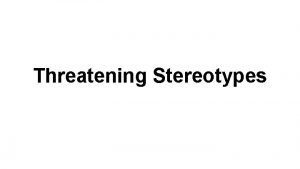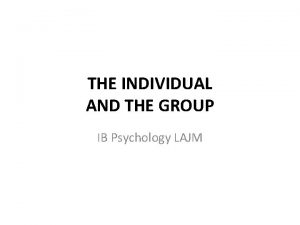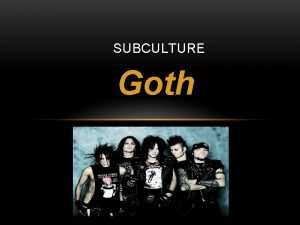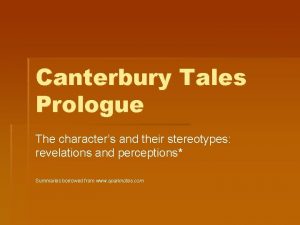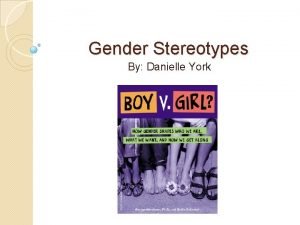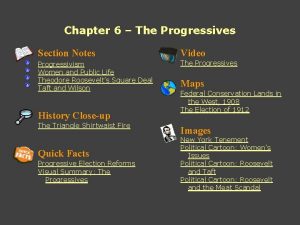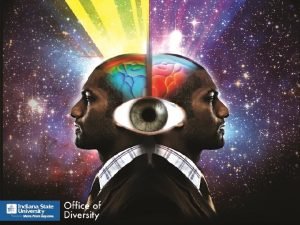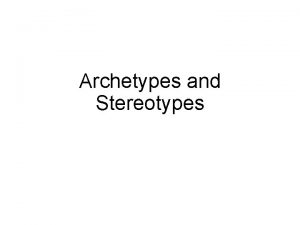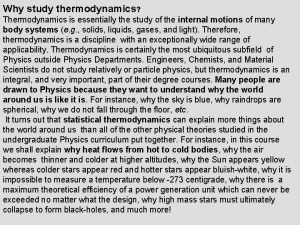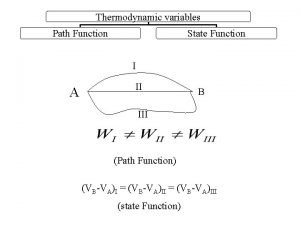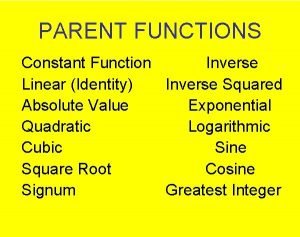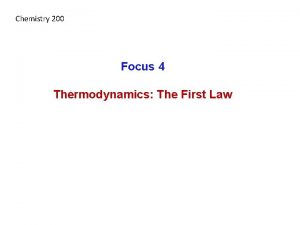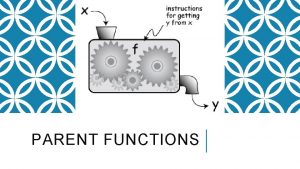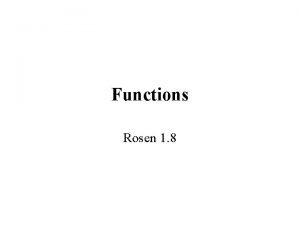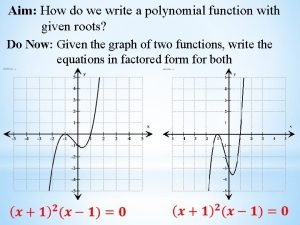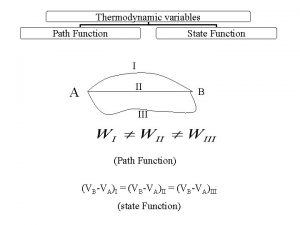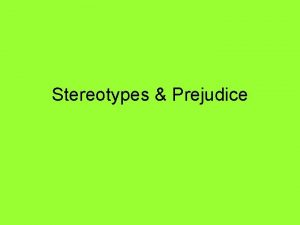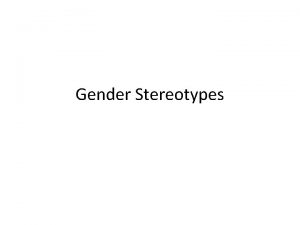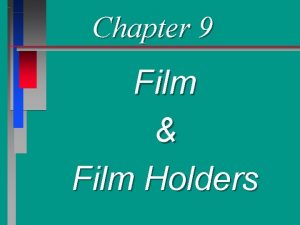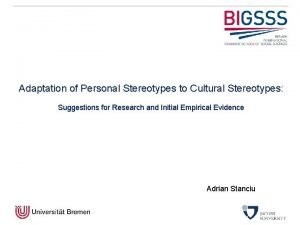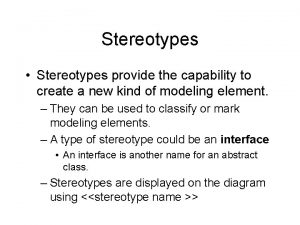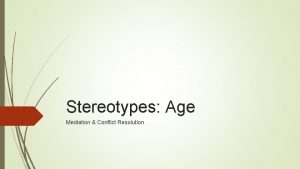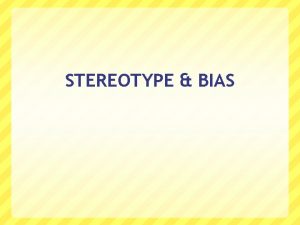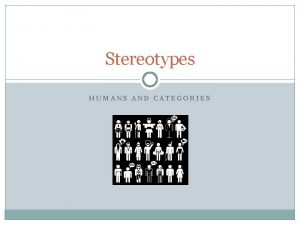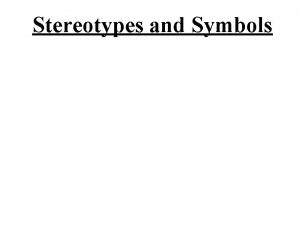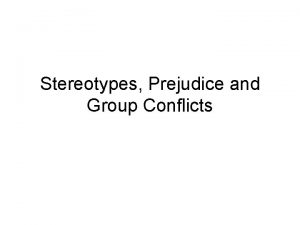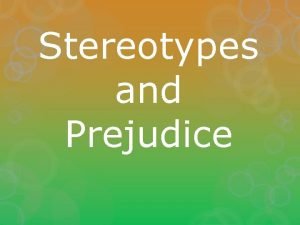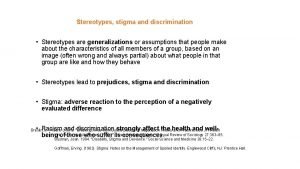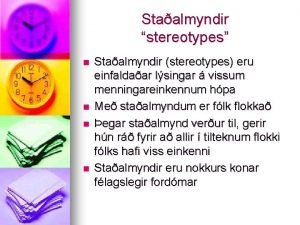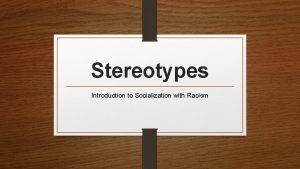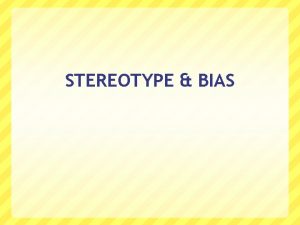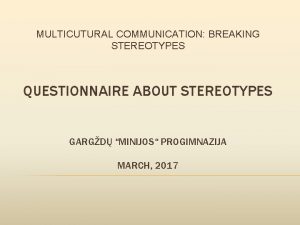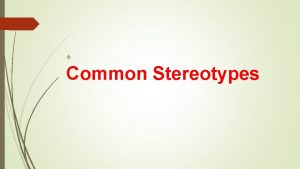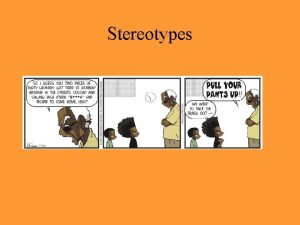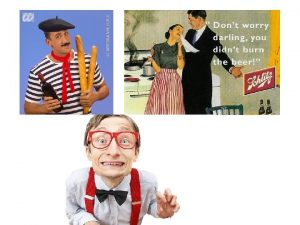Lecture 4 How do stereotypes function in film

















































- Slides: 49

Lecture 4: How do stereotypes function in film? Professor Daniel Bernardi / Professor Michelle Martinez 1

In the last lecture… • • • Stereotyping Eleven (11) Theses about Stereotypes Learning Stereotypes Charles Ramírez Berg, Author, Latino Images in Film 2

In this lecture… • • • Semiotics of Stereotypes Falling Down (1993) Reception of Stereotypes Ben Shahn, Conversations, 1958 You can pause the lecture at any point, click on one of the hyperlinks (text that is underlined) to visit a site or view a clip, and then return to the same point in the lecture when you’re ready. 3

Semiotics of Stereotyping Frank Silvera in Hombre (1967) Lecture 4: Part 1 4

Primer on Semiotics is both a theory of communication, of sign systems, and a method of analysis, i. e. , how to study meanings produced by signs and sign systems. In film and media studies, semiotics is concerned with the way signs and sign systems facilitate and influence the production of meaning through various cinematic codes: from framing to lighting to acting. 5

Questions • • • What are the basic units or codes of communication in the cinema? How do these codes work in relation to each other and other signifying systems to facilitate meaning production? How are they received by audience members? – We learn how to make meaning from codes. – This process is cultural and historical. 6

The Sign • • Signifier: Recognizable Part of the Signified: Mental Image After Receiving the Signifier / The Concept it Represents For example: The word or image "cat" is the signifier, and the concept of a cat is the signified. The two together constitute a sign. 7

Semiotic Process From Noodle Tools 8

Relationship of Signifier to Signified • • Arbitrary: The word and or image “cat” aren’t inherently connected to the mental image of feline animal; that relationship is structured through the evolution of language systems (words and images) in relation to social and individual perception. Historical: The relationship of signifier to signified, in short, is historical. It changes with time, space and “knowledge. ” 9

Signified/Meanings • • Denotative: Definitional, literal, obvious or commonsense meaning of a sign. Connotative: Cultural, personal, ideological associations of the sign. While we may find it useful to distinguish between the two, “…in practice such meanings cannot be neatly separated. Most semioticians argue that no sign is purely denotative - lacking connotation. ” – Semiotics for Beginners 10

Denotative Meanings “From a semiotic perspective, we can say that the cinematic image of el bandido is the signifier, the recognizable part of the sign. At its most basic, most ideologically innocent, denotative level, what it signifies is simply a dark-skinned male with bullet belts adorning his chest and a sombrero on his head. ” – Charles Ramírez Berg Emiliano Zapata 11

Connotative Meaning “But at the connotative level much more is signified. There a host of meanings that the image has accrued over nearly a century of repeated representations, and it is here that the movie stereotype carries most of its informational – and ideological – freight. ” – Charles Ramírez Berg Suggested Supplemental Reading: Semiotics: the Basics by David Chandler 12

Racial Connotation “… darker skin immediately marks him as an individual outside the white Anglo norm. At best, as an Other he is different and perhaps suspect because of that; at worst, he presents a threat to dominant society's purported racial purity. ” – Charles Ramírez Berg Frank Silvera in Hombre (1967) 13

National Connotation “He is obviously not a (north) American as such a person has been defined in the popular consciousness by movies and history books (i. e. , someone of Western European stock). His nationality, therefore, is just another way he is marked as an Other. ” – Charles Ramírez Berg Frank Silvera in Hombre (1967) 14

Narrative Connotation “According to time honored Hollywood conventions, used over decades of movie storytelling, this image is the sign for the Mexican bandit, one of American movies’ favorite villains. As such, he is a threat that needs to be eliminated in order to return the diegetic world to its tranquil, prethreat status quo. ” – Charles Ramírez Berg Frank Silvera in Hombre (1967) 15

Behavior Connotation “This character will act in predictably despicable, antisocial, sneaky, violent, criminal ways. ” – Charles Ramírez Berg Frank Silvera in Hombre (1967) 16

Psychological Connotation “Based on his actions, el bandido is at the very least a simpleminded sociopath, though from decades of experience with his various screen incarnations, we gather the he is also maladjusted and unstable, alcoholic and sadistic, and a sexual psychopath. ” – Charles Ramírez Berg Frank Silvera in Hombre (1967) 17

Moral Connotation “… he is immoral (he knows the difference between right and wrong but chooses to ignore it) or amoral (for him there is no dividing line between right and wrong). Either one places him far outside mainstream morality. ” – Charles Ramírez Berg Frank Silvera in Hombre (1967) 18

Ideological Connotation “The organization principle of el bandido as an ideological force is his fundamental antiestablishmentarianism. Because his entire being stands against the nation’s values and ideals, his very existence threatens dominant American ideology. ” – Charles Ramírez Berg Frank Silvera in Hombre (1967) 19

Review “A mediated stereotype, then, operates by gathering a specific set of negative traits (signifiers) and assembling them into a particular image (sign)”. – Charles Ramírez Berg • • • Image/Sign = El Bandido Traits/Signifiers = Color, Sombrero, Smirk Signified = Connotative Meanings (race, nation, morality, etc. ) 20

Falling Down (1993) Lecture 4: Part 2 21

Credits • • Released in 1993 Directed by Joel Schumacher Stars Michael Douglas Set in Los Angeles, CA Shot from Falling Down (1993) 22

Plot Summary “A divorced engineer for the defense industry gets stuck in L. A. traffic and finally snaps. He gets out of his car and begins a walk through central L. A. , where he encounters various levels of harassment, which he learns to deal with by acquiring weapons along the way. His actions attract the attention of a retiring cop, and he gets involved with the case, following the engineer's path toward Venice, where his daughter is having a birthday party. ” Summary written by Ed Sutton {esutton@mindspring. com} 23

Today’s El Bandido: Latino Gangster / Urban Bandido “…it is not exactly the same stereotype; there are differences in the characters ages and social environments to take into account. However, the differences between the two are almost exclusively at the denotative level; the same connotative traits [listed] apply to Hollywood’s Latino homeboy. ” – Charles Ramírez Berg Shot from Falling Down (1993) 24

Cinematic Elements Contributing to Stereotypical Signs • • • Mise-en-Scène Cinematography Editing Sound Costuming & Make-up Performance Click Here to See Scene from Falling Down (1993) 25

Mise-en-Scène • Definition: – “Putting-in-the-scene” / Packing of the Set – Set Design and Lighting • The Scene: – Deserted Hill Amid Graffiti-Laden Rubble – Downtown LA in Background / D-FENS is Far from Civilization – Gang Members Circle D-FENS / Animals Circling Prey – Lighting Enduces Perspiration/Shiny Spots in Actors of Color (more light needed to light them) 26

Cinematography • Definition: – Framing (protagonist centered on “T”) – Movement (pan, dolly, track, crane, etc. ) – Angles (Low, High, Eye-Line) • The Scene: – D-FENS is Centered / Latino Hoods in Periphery – POV from Hoods “Circle” D-FENS – High Angle Shots Have Audience “Looking” Down on Hoods 27

Editing • Definition: – Assembling of Shots to Tell a Story • The Scene: – Standard Pattern (establishing, medium, closeups for detail and drama) – Higher Number of Close-ups on D-FENS – Coupled w/ Framing, Duration of Shots, and Composition, Editing Facilitates Audience’s Sympathy w/ D-FENS & Fear of Hoods 28

Sound • Definition: – Music (diegetic and non-diegetic) – Sound Effects • The Scene: – “Tribal” Music Heard in Jungle Movies (conga drums, bass, bongos, staccato rhythms) – Animal Sounds (crowing bird, barking) – Helicopter, Spanish Songs / Third World 29

Costuming & Make-Up • Definition: – Clothing Worn by Characters – Make-up Used to Highlight “Features” • The Scene: – – History of Blackface, Brownface, etc. Hair Styles (Dominant & Counterculture) Scars and Tattoos D-FENS in White Clothing / Hoods in Dark 30

Performance • Definition: – Dialogue and Intonation – Acting Conventions • The Scene: – – Dialogue Conveys Character Speech Style Conveys Intelligence/Ignorance Gestures Convey Psychology and Morality Movements Convey Civility/Lack Thereof 31

The Big Point “If the typical Hollywood film story follows the pattern of equilibrium-disequilibrium-equilibrium, then from our perspective it is often the tale of a valiant, Anglo male overcoming the threat posed by some Other. Eliminating the Other eliminates the threat, restores equilibrium, and leads to closure. Minor character of color and villains are typically Others (of one kind or an other-race, class, ethnicity, gender, etc. ) and usually stereotypes. ” – Charles Ramírez Berg 32

Revisit “Homeboy” Scene • • • What is the norm and how is it threatened? How does visual style enforce stereotype? How does performance enforce stereotype? Where do your sympathies lie and why? How is the threat resolved? 33 Click Here to See Scene from Falling Down (1993)

Reception of Stereotypes Indiana Jones (Harrison Ford) in Raiders of the Lost Ark (1981) Lecture 4: Part 3 34

Raiders of the Lost Ark • • Released in 1981 Directed by Steven Spielberg Stars Harrison Ford Set in the 1930 s and 1940 s Shots from Raiders of the Lost Ark (1981) 35

Plot Summary “Renowned archeologist and expert in the occult, Dr. Indiana Jones, is hired by the U. S. Government to find the Ark of the Covenant, which is believed to still hold the ten commandments. Unfortunately, agents of Hitler are also after the Ark. Indy, and his ex-flame Marion, escape from various close scrapes in a quest that takes them from Nepal to Cairo. ” Summary written by Colin Tinto {cst@imdb. com} 36

Opening Scene “By the time this introductory scene is over, the film’s hero, archeologist Indiana Jones (Harrison Ford), will be betrayed by Hispanic males four different times. ” – Charles Ramírez Berg • • Native that makes a cowardly exit after uncovering a huge stone head. Peruvians that try to shoot him in the back. Peruvians that leave him for dead. Native warriors that chase him. 37

View Opening Scene Click Here to See Scene from Raiders of the Lost Ark (1981) 38

What’s the big deal? “One reason I refer to Raiders of the Lost Ark is because it illustrates so well how naturalized the process of stereotyping truly is. When I show this clip to students, I ask how many noticed the way it denigrated Hispanics the first time they saw it, few can truthfully say they did. To be honest, neither did I. Like everyone else in theatre around me when I saw it in 1981, I was too busy rooting for Indiana Jones. I am seeking to understand why I did so…” – Charles Ramírez Berg 39

How does identification work? • • Hollywood expertly and repeatedly deploys the technique of the dominant narrative paradigm, which includes, as we have seen in this lecture, stereotyping. After years and years of repetitive viewing without questioning, the audience codes the film and thereby completes the stereotyping process. 40

Psychotherapist Murray Bowen • • Model to Explain Identification Process Based on Studies of Nuclear Family – Situates Individual in Complex Family Dynamic – Triangle Relationships / “a natural way of being for people” according to Bowen Family Member 1 + relations Family Member 3 + Family Member 2 41 Click Here to Read More about the Bowen Theory

Triangled Member “When the anxiety level is high enough, two powerful family members, in order to reduce their anxiety and insecurity, pick a defect in a third person and position the third as deficient. Forming such a triangle with two positive sides against a negative one, where two parties have reached an agreement about an other, describes the process of triangling. ” – Charles Ramírez Berg Family Member 1 + Anxiety Triangled Family Member + Family Member 2 42

Triangled Member • • Triangle Method Applies to Social Relations Triangled Social Group Scapegoat by Allied Other Groups – Coercion and Consent (co-opting group) – Assimilation – Hero or Bad Guy? Dominant In-group + Hegemony Triangled Out-Group + Other Out-Group 43

The Big Theoretical Point “The dominant class maintains its position of power by social co-optation: it investigated a series of allegiance with disenfranchised out-group and imperfect members of in-group…. Thus Others (both in-group and out-group) are sometimes stigmatized and estranged from the dominant, but sometimes allied with the dominant in a placating arrangement. ” – Charles Ramírez Berg 44

The Triangled Viewer • • Invited Into Triangle Asked to Take a Side – – • Hero (in-group) Other Character (out-group or just minor) Easiest Way into Movie is Assuming Positive Point (hence, identification) Archetype Hero + Hegemony Stereotype + Viewer 45

The Big Critical Point “In any give film, a choice between hero and stereotype is offered the viewer, and the viewer makes a decision each time the archetype is confronted or juxtaposed with any character. This is very clearly seen in the opening from Raiders of the Lost Ark. ” – Charles Ramírez Berg Harrison Ford Publicity Shot from Raiders of the Lost Ark (1981) 46

Why do we identify with the hero? • • • Efficient Work of the Hollywood Paradigm Hero’s Attractive Heroic Qualities (bravery, daring, composure, intelligence, experience) Facilitated by Feeling of Kinship – Color, Nationality, Language, Temperament – Morality, Values 47 Shots from Raiders of the Lost Arc (1981)

Your Choices • Side with the Archetype / Hero / In-Group – – • Side with Minor Characters / Stereotyped – – • Identify w/ the Film’s Dominant Ideology Triangle Others Difficult to Do Difficult to Sustain Reject Preferred Pleasures of the Story – – – Reject Dominant Ideology Walk Out Opt for Other Pleasures (like being critical) 48

End of Lecture 4 Next Lecture: How about some Latino stereotypes? 49
 01:640:244 lecture notes - lecture 15: plat, idah, farad
01:640:244 lecture notes - lecture 15: plat, idah, farad Slipper or guide bearing
Slipper or guide bearing Slovenia stereotypes
Slovenia stereotypes Panchatantra kākolūkīyam: of crows and owls
Panchatantra kākolūkīyam: of crows and owls Language stereotypes
Language stereotypes Stereotypes spielverhalten
Stereotypes spielverhalten Stereotyping in 12 angry men
Stereotyping in 12 angry men Sense properties and stereotypes
Sense properties and stereotypes Hero stereotypes
Hero stereotypes Age stereotypes
Age stereotypes Czech republic stereotypes
Czech republic stereotypes Essential questions about stereotypes
Essential questions about stereotypes Activity 1 what do you know about stereotypes
Activity 1 what do you know about stereotypes Stereotypes ib psychology
Stereotypes ib psychology Goth who
Goth who Bias
Bias Kwl chart stereotypes
Kwl chart stereotypes Seterotype
Seterotype The canterbury tales the prologue characters
The canterbury tales the prologue characters New york stereotypes
New york stereotypes Gender stereotypes
Gender stereotypes New york stereotypes
New york stereotypes Sexual orientation stereotypes
Sexual orientation stereotypes Snopes
Snopes French people stereotypes
French people stereotypes Module 2 stereotypes and biases
Module 2 stereotypes and biases Dutch stereotypes
Dutch stereotypes Archetypes and stereotypes
Archetypes and stereotypes Why study thermodynamics
Why study thermodynamics Rational function parent function
Rational function parent function Transformations in rational functions
Transformations in rational functions Pressure is state function or path function
Pressure is state function or path function Identity function parent function
Identity function parent function Table is linear or nonlinear
Table is linear or nonlinear Exponential functions vocabulary
Exponential functions vocabulary Pressure is state function or path function
Pressure is state function or path function Function and relation
Function and relation Logarithmic parent function domain and range
Logarithmic parent function domain and range Absolute value piecewise function
Absolute value piecewise function Polynomial function form
Polynomial function form Rational fraction
Rational fraction How a predicate function become a propositional function?
How a predicate function become a propositional function? Cubic parent function equation
Cubic parent function equation What is not a one to one function
What is not a one to one function Reverse exponential graph
Reverse exponential graph The inverse of exponential function is a composite function
The inverse of exponential function is a composite function Rumus permintaan dan penawaran
Rumus permintaan dan penawaran Polynomial function parent function
Polynomial function parent function State vs path function
State vs path function College algebra polynomials
College algebra polynomials




